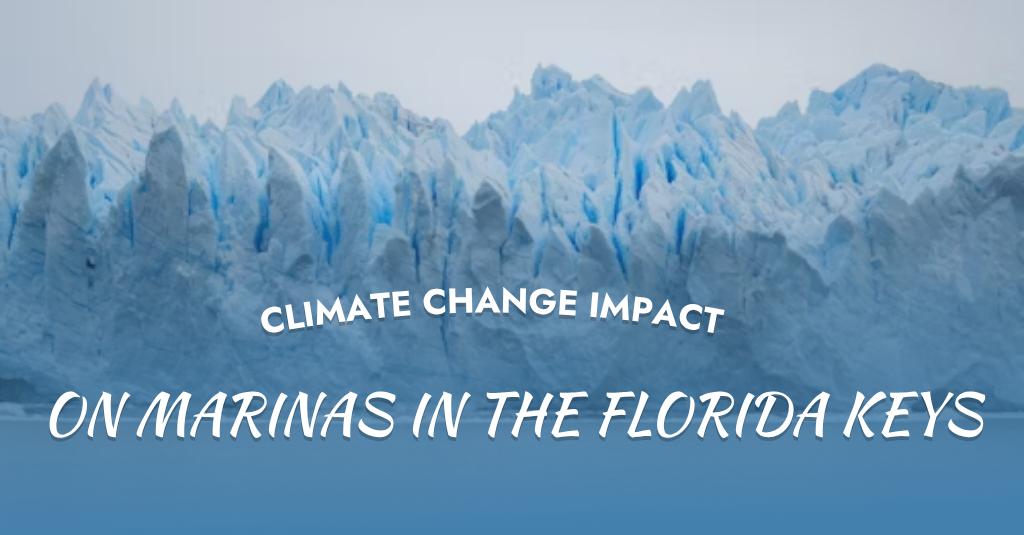
Climate Change Impact on Marinas in the Florida Keys
From one year to another, the different climate change impact on marinas, especially those in coastal areas very vulnerable, like the Florida Keys. All these include rising sea levels, stronger storms, and ecological stressors that enable the marinas to realize what they can do to plan for the future. The customers at Mangrove Marina view the situation as current issues to think over, rather than a future time to be concerned with. Awareness of risks for marinas enables them to be sustainable, safe, and welcoming to generations to come through mitigation efforts.
What adaptation or mitigation measures are available, and how is climate change impacting marinas like Mangrove Marina?
Because marinas are situated on the water, they frequently confront risks. They are places for community, business, and fun. Climate change brings many problems, like damage to assets and how they serve their guests. Admitting there are problems is the first step to making them stronger against these risks.
Storm resilience through design and planning
Stronger hurricanes and tropical storms bombard marina infrastructure with tests of resilience. Better building codes and surge protection can increase storm resilience while maintaining continuity for the boater.
Adaptation strategies for long-term security
Realizing the need for adaptation plans will allow marinas to ensure their users can be serviced in a changing climate. Some examples include floating docks not so rigidly installed, upgraded utilities, or investments in renewable energy sources.
How does sea level rise threaten marina infrastructure?
In low-lying areas like the Florida Keys, the climate change impact on marinas is most visible through rising tides and encroaching saltwater. Infrastructure built decades ago may no longer be suitable for today’s conditions.
Damage to docks and seawalls
Persistent flooding wears down seawalls, erodes land, and weakens dock structures. Over time, the cost of repairs increases, making proactive investment critical for survival.
Increased maintenance demands
Saltwater exposure accelerates corrosion in electrical systems, fuel lines, and safety equipment. Preventive planning reduces repair costs and ensures uninterrupted guest services.
Planning through sustainable marina design
By embracing sustainable marina planning, operators can raise dock heights, reinforce shorelines, and integrate eco-friendly building materials that withstand harsher conditions.
What does storm intensification mean for dock damage?
Tropical storms and hurricanes are growing more powerful due to warmer oceans, and with them comes a greater climate change impact on marinas. Strong winds, heavy rainfall, and surge events threaten both boats and infrastructure.
Dock failures under pressure
Wooden docks and traditional pilings often cannot withstand modern storm forces. Structural reinforcements, storm-rated materials, and floating designs provide better resilience.
Protecting boats and tenants
Strong storms also threaten stored vessels. Marina operators must adopt plans for vessel evacuation or secured mooring systems to minimize loss for tenants.
Emergency response as part of resilience
Preparedness is equally important as infrastructure. Clear protocols, staff training, and real-time communication systems mitigate chaos during extreme weather conditions.
How are mangrove systems responding to climate stress?
Mangroves are natural protectors of coastlines, but they are under pressure. Their role in reducing the climate change impact on marinas is vital, especially in the Florida Keys.
Mangroves as natural buffers
Mangroves absorb storm surges, reduce erosion, and protect marina facilities from direct wave impact. Their health directly influences marina safety.
Climate stress on mangrove health
Stress from pollution, rising seas, and increased temperatures affects the health of mangroves. These factors disrupt the natural defenses of mangroves from marine activities
Integrating ecology into marina planning
By supporting mangrove conservation, marinas can combine built and natural defenses. This ecological partnership creates a stronger line of resilience.
What policy/regulation trends are relevant?
The immediate climate change impact on marinas is being acknowledged by governments and municipal authorities. Resilience, sustainability, and carbon reduction are becoming the new norms.
Standards for elevation and building codes
In the Florida Keys, new building rules are calling for stronger foundations and higher elevations for coastal infrastructure, like as marinas.
Funding support for adaptation projects
Policy trends are also establishing grants and financial incentives for reducing carbon footprints and integrating renewable energy at marinas.
Collaborative governance for sustainable durability
Partnerships between public and private sectors help to bring together different approaches to climate resilience between marinas, municipalities, and environmental groups.
What can tenants/boaters do to help resilience?
While much of the responsibility lies with operators, tenants, and boaters play a role in addressing the climate change impact on marinas.
Practicing sustainable boating
Guests can help by reducing fuel waste, managing waste responsibly, and supporting carbon footprint reduction initiatives. Small actions compound into meaningful results.
Supporting marina adaptation strategies
Boaters who embrace new rules, like storm preparation requirements or conservation efforts, strengthen the community’s overall resilience.
Engaging in feedback and awareness
Providing input through digital tools or feedback systems helps operators improve adaptation and guest safety during climate challenges.
Conclusion
It is a fact beyond contention that climate change impact on marinas like those in the Florida Keys. Policymakers, boaters, and marina managers must rush, if not certain by urgency, to respond to increased ecological stresses, rise of seas, and increase of storms.
The moment to take action is now if you are concerned about boating sustainably and safely. Visit the Mangrove Marina and contribute to ensuring Florida marinas have a bright future.
FAQs
In what ways does sea-level rise put marinas in danger?
The infrastructure is damaged, and flooding becomes more likely, which forces the acquisition of higher docks or seawalls.
What are some of the main adaptive strategies for marinas?
Among these are the use of environmentally friendly construction materials, storm-hardy utilities, and floating docks.
How can boaters counteract climate change risks?
They may support environmentally sustainable practices for marinas, lessen emissions, and comply with preparation regulations.





